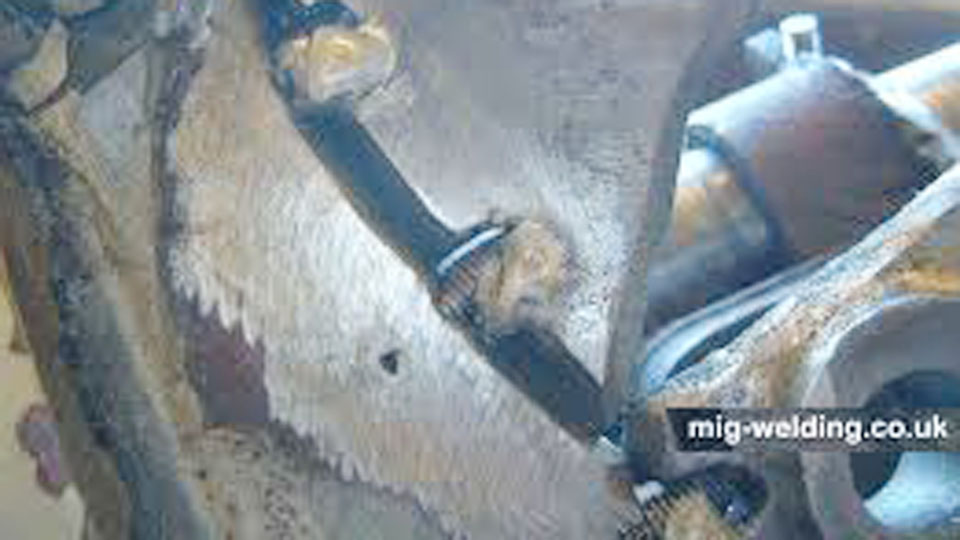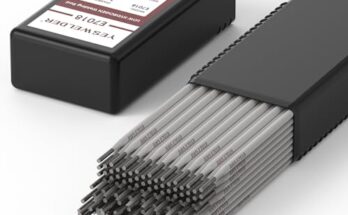Welding cast iron to steel can be tricky, but it’s absolutely possible with the right approach. I remember the first time I tried it, and let me tell you—it wasn’t easy. Cast iron is brittle and can crack easily under heat stress, while steel is more flexible.
The key to making this work is choosing the right welding wire, controlling heat, and using proper preheating techniques.

Image by mig-welding.co.uk
If you’ve got a broken part or a fabrication project that requires joining cast iron to steel, MIG welding can be a great solution. There are some important steps and techniques you need to follow. Let me walk you through everything you need to know to get a strong and reliable weld.
Cast Iron and Steel Differences
Before jumping into welding, it’s important to understand why cast iron is so difficult to weld compared to steel.
- Cast Iron: High carbon content (2-4%), making it brittle and prone to cracking when exposed to rapid temperature changes.
- Steel: Low carbon content, much more ductile and weldable.
Because cast iron is prone to cracking, welding it to steel requires special considerations. The biggest challenge is controlling heat input and cooling rate to prevent stress fractures in the cast iron.
Choosing the Right Welding Wire for MIG
The type of wire you use is critical for a successful weld. For MIG welding cast iron to steel, you have a few choices:
| Wire Type | Best For | Pros | Cons |
|---|---|---|---|
| Nickel-Based Wire (ERNiFe-CI or ERNi55) | Best for strength and crack resistance | Strong, ductile welds | Expensive |
| Stainless Steel Wire (ER309L) | Good for non-structural applications | Compatible with both metals | Weaker bond than nickel wire |
| Mild Steel Wire (ER70S-6) | Temporary or low-strength repairs | Cheap, easily available | High risk of cracking in cast iron |
For strong, crack-resistant welds, Nickel-based wire (ERNi55 or ERNiFe-CI) is the best choice. However, stainless steel wire (ER309L) can also work if strength is not the main concern.
Preparing the Metal Surfaces
Preparation is just as important as the welding itself. Since cast iron absorbs contaminants like oil and carbon over time, it needs to be cleaned thoroughly before welding.
- Remove Rust and Paint – Use a wire brush, grinding wheel, or sandpaper.
- Degrease the Surface – Wipe down both the cast iron and steel with acetone to remove oil.
- Bevel the Edges – Grinding a slight bevel at the joint helps create a stronger weld.
For best results, preheat the cast iron before welding to minimize stress cracks.
Preheating the Cast Iron
Preheating is one of the most important steps when welding cast iron to steel. Without it, the cast iron will cool too quickly and crack under stress.
Best Preheating Methods
- Use a propane torch or oven to bring the cast iron up to 400-600°F.
- Heat slowly and evenly to avoid thermal shock.
- Use a temperature stick or infrared thermometer to check the heat.
Preheating helps reduce stress buildup and makes the cast iron more forgiving during welding.
Setting Up the MIG Welder
Now that the metal is prepped, it’s time to set up your MIG welder correctly.
Polarity and Shielding Gas
- Polarity: Set the welder to DCEP (Direct Current Electrode Positive) for proper fusion.
- Shielding Gas: Use 75% Argon / 25% CO₂ for best results. 100% CO₂ can cause excessive spatter and overheating.
Voltage and Wire Speed Settings
The settings depend on the thickness of your metals. Here’s a general guide:
| Material Thickness | Voltage | Wire Speed (inches per minute) |
|---|---|---|
| 1/8″ (3mm) | 17-19V | 180-220 ipm |
| 1/4″ (6mm) | 19-21V | 220-250 ipm |
| 3/8″ (9mm) | 21-23V | 250-280 ipm |
Always start on the lower end and adjust based on arc stability and penetration.
Welding Technique for Cast Iron to Steel
The welding process requires control and patience. If you rush, cracks will form, and the joint won’t hold.
Best Welding Techniques
- Use Short Stitch Welds – Instead of running a long bead, use small 1/2-inch welds and let the metal cool slightly in between.
- Keep the Arc Short – A longer arc increases heat input, leading to cracking.
- Move in a Controlled Motion – Avoid weaving too much; a straight bead or slight circular motion works best.
Avoid Overheating
Cast iron hates rapid temperature changes. If it gets too hot, too fast, it will crack immediately. To prevent this:
- Weld in short bursts, letting the metal cool naturally.
- Keep preheating but avoid excessive heat input from the arc.
- Do not quench with water after welding—this will cause instant cracking.
Post-Weld Cooling and Stress Relief
Once the welding is done, the cooling process is just as important as the welding itself.
How to Cool Down Cast Iron Slowly
- Wrap the part in welding blankets to slow down cooling.
- Place the part in dry sand or vermiculite for gradual heat dissipation.
- Let it cool to room temperature over several hours to prevent cracking.
Rushing this step can undo all your hard work. Always let cast iron cool slowly and evenly.
Common Mistakes to Avoid
I’ve made plenty of mistakes when welding cast iron to steel, and I’ve learned the hard way what not to do.
- Skipping Preheating – This will almost always cause cracks.
- Using the Wrong Filler Wire – Mild steel wire won’t bond properly and can cause brittle welds.
- Applying Too Much Heat – Overheating will weaken the joint and lead to failure.
- Cooling Too Fast – If you don’t slow-cool, the cast iron will crack as it shrinks.
If you avoid these mistakes, your weld will be much stronger and more reliable.
Conclusion
Welding cast iron to steel with MIG is challenging but absolutely possible if done correctly. The key to success is controlling heat, using the right filler wire, and ensuring proper preheating and slow cooling. If you follow these steps, you’ll be able to create strong, crack-free welds that last.
The first time you try this, take your time. Once you get the hang of it, you’ll feel more confident tackling similar projects in the future.
FAQs
Can you MIG weld cast iron to steel without preheating?
No, preheating is necessary to prevent cracking. Cast iron is brittle and will crack if it cools too quickly.
What is the best wire for MIG welding cast iron to steel?
Nickel-based wire (ERNi55) is the best choice. Stainless steel wire (ER309L) can also work for non-structural welds.
Why does my cast iron weld keep cracking?
It’s likely cooling too fast. Use preheating, slow-cooling, and short stitch welds to prevent cracks.
Can I use flux-core wire for welding cast iron to steel?
No, flux-core wire is not recommended. You need shielding gas and the right filler material for a strong weld.
How do I prevent warping when welding cast iron to steel?
Use small welds, preheat the cast iron, and let it cool slowly in welding blankets or dry sand.





